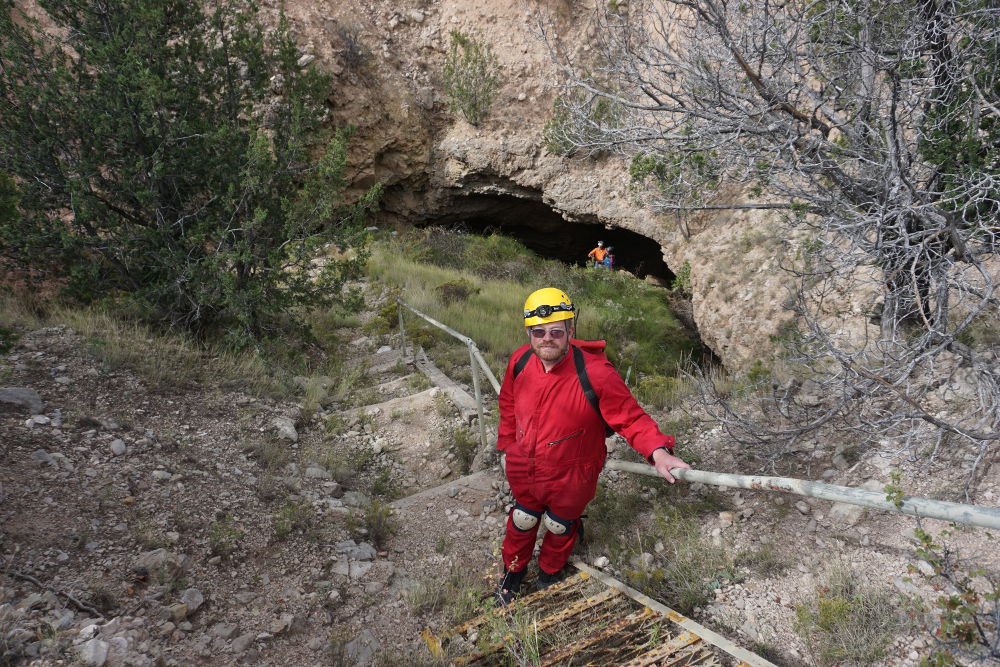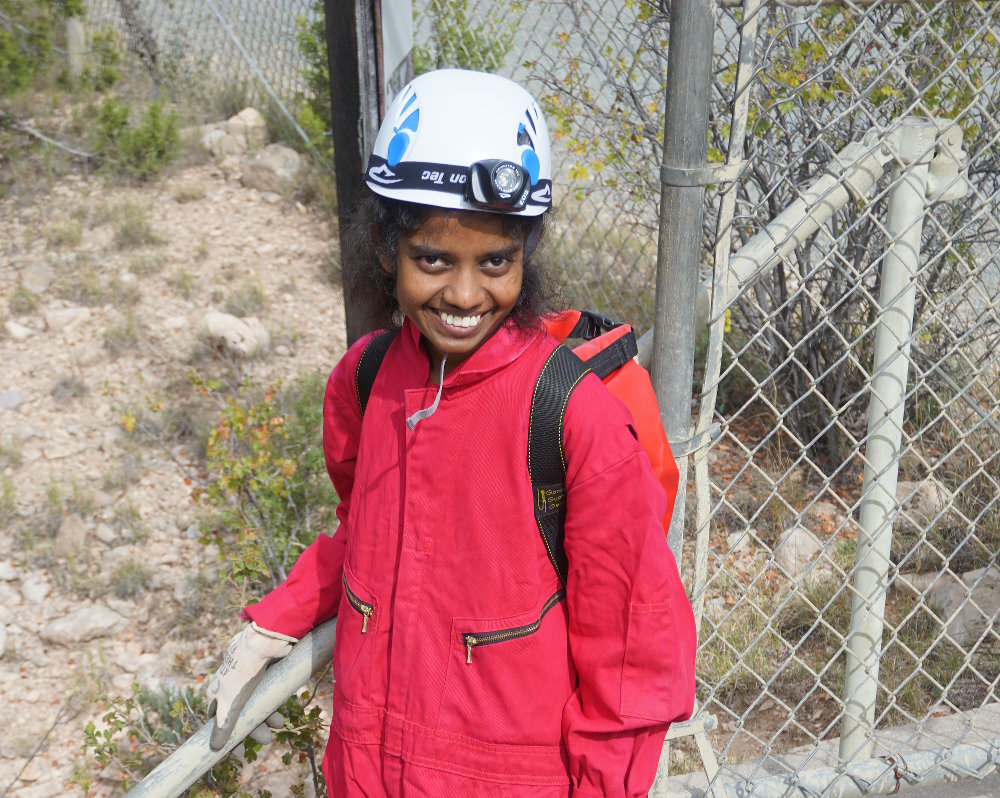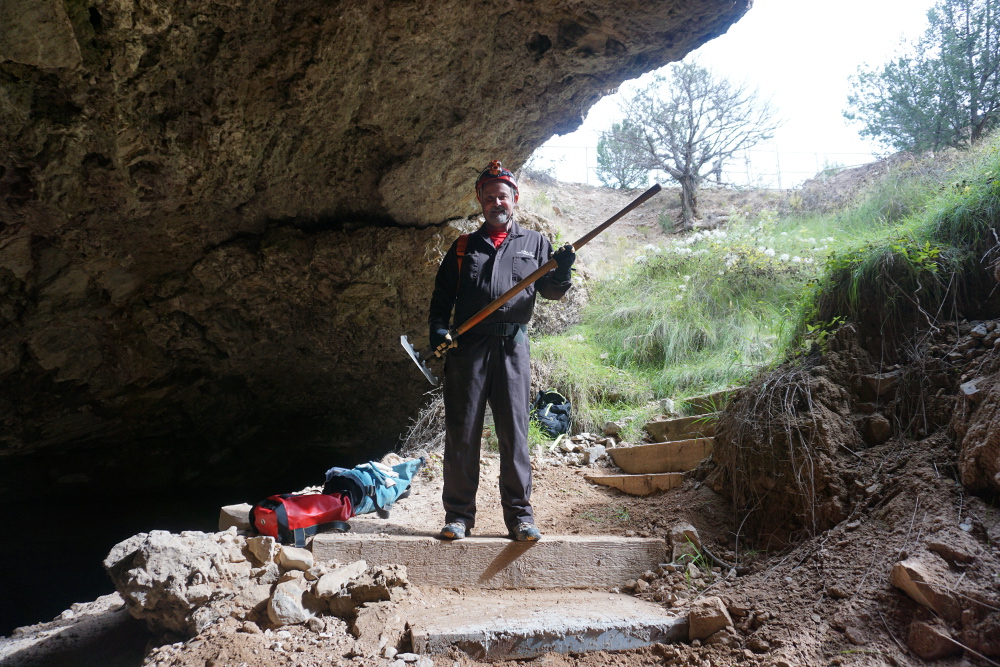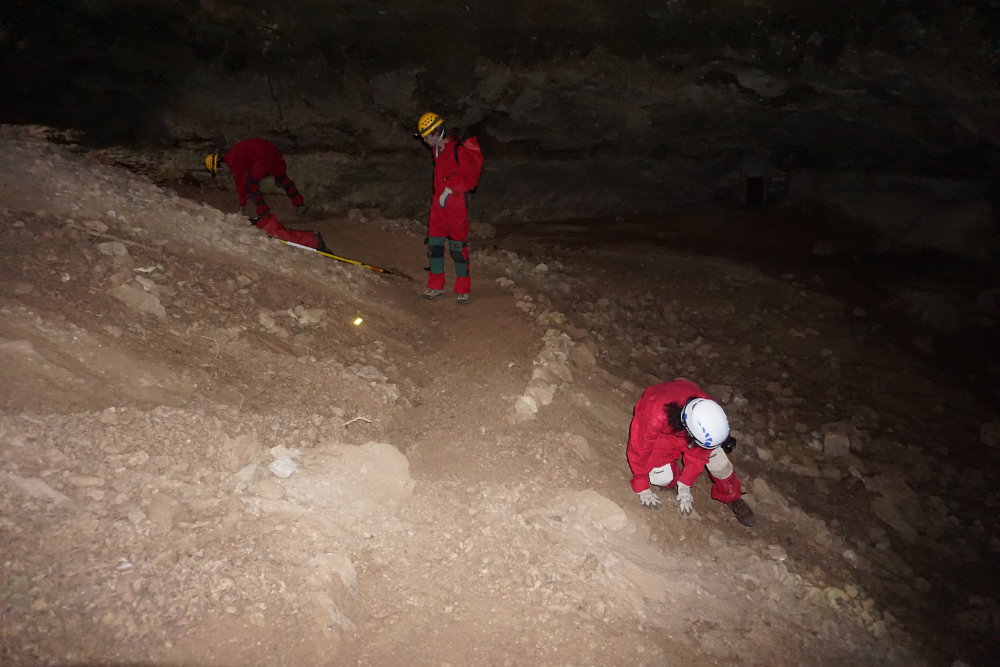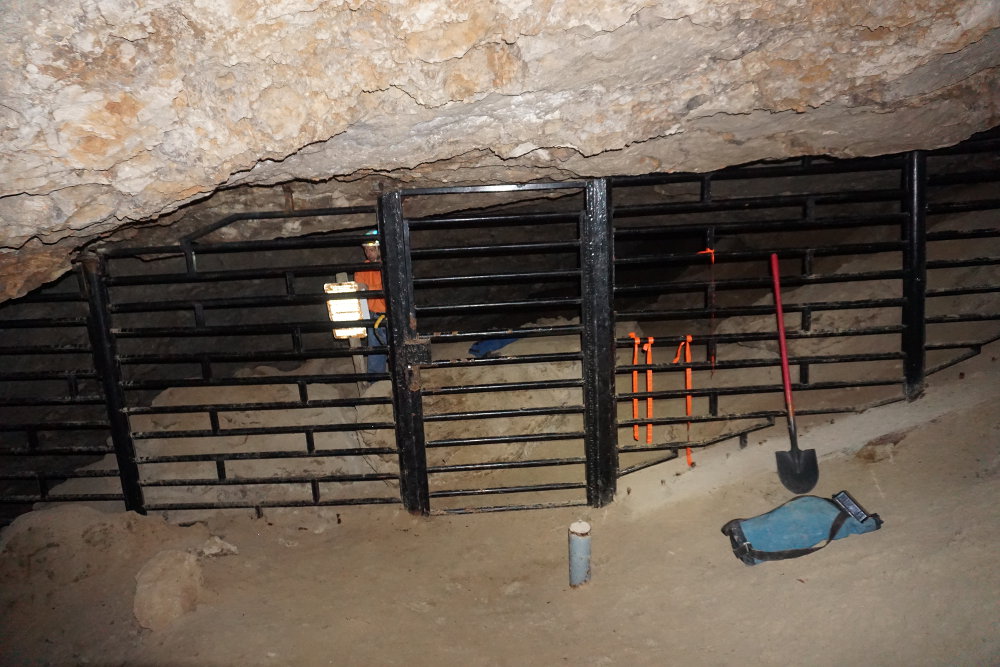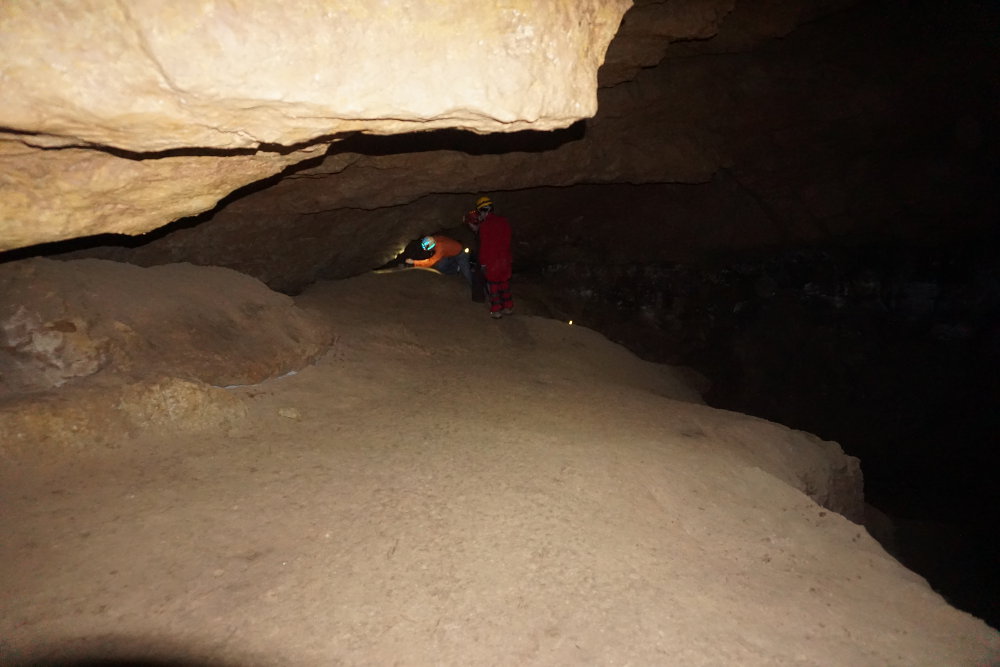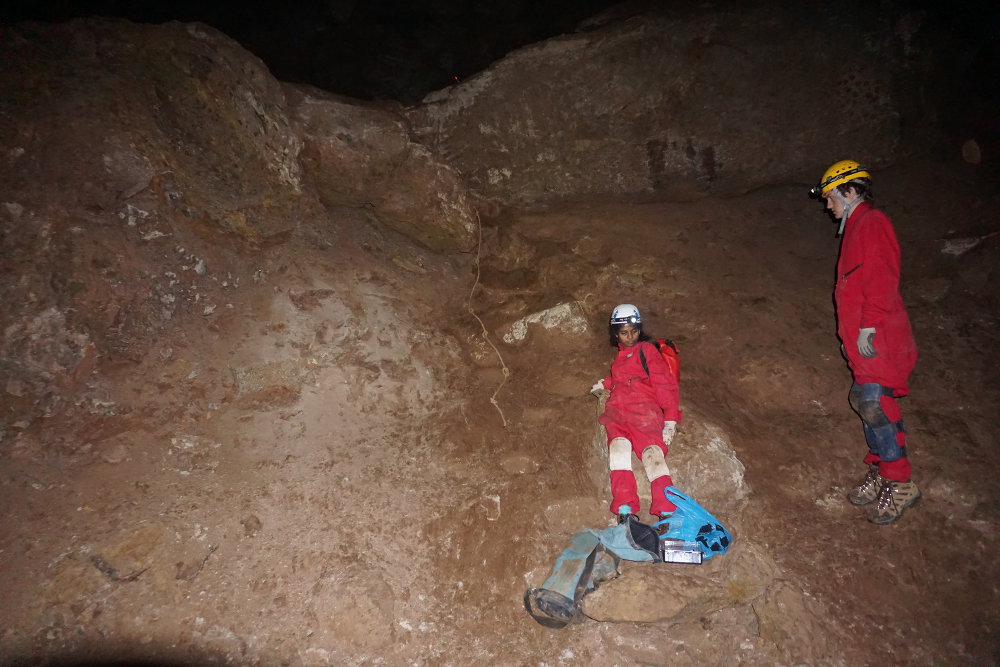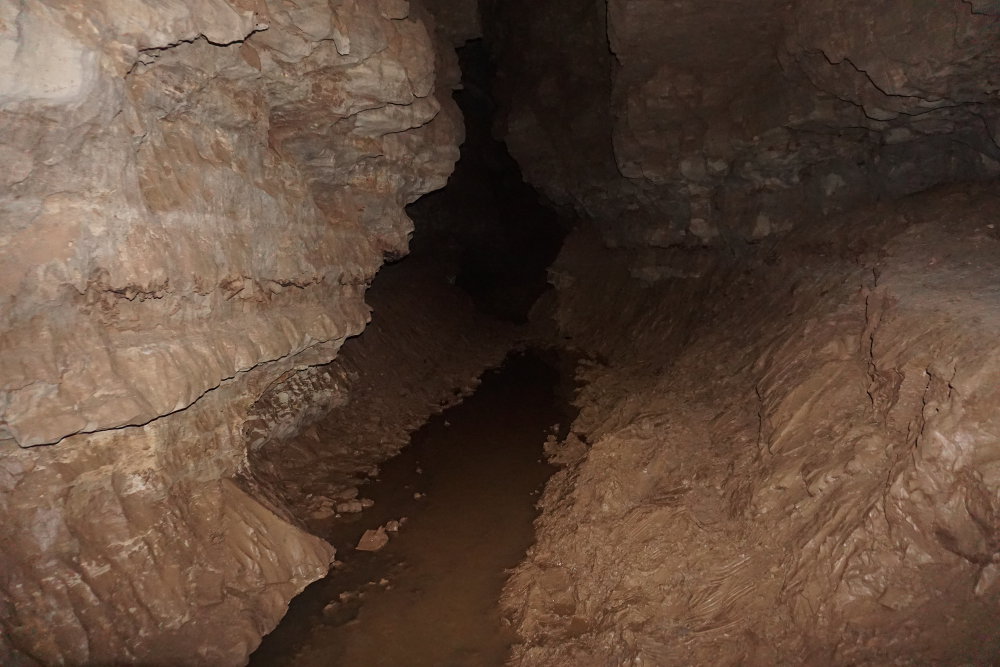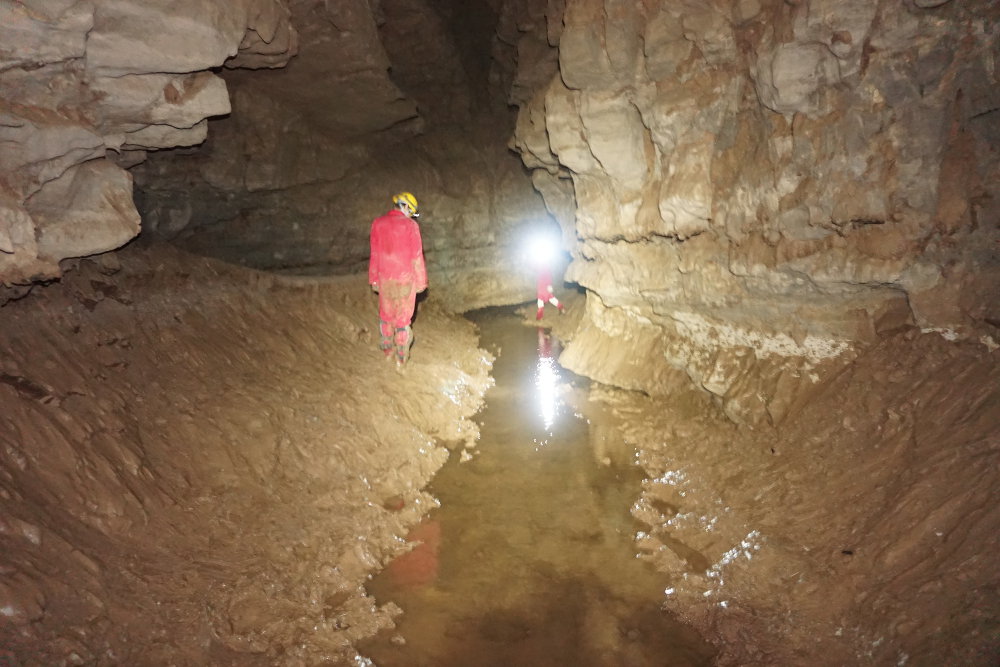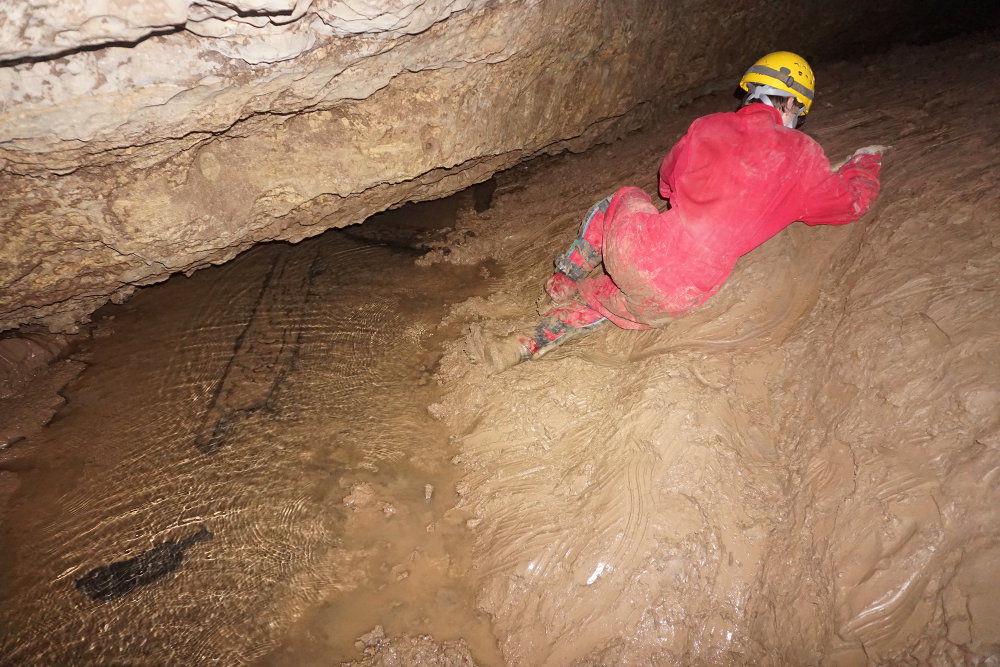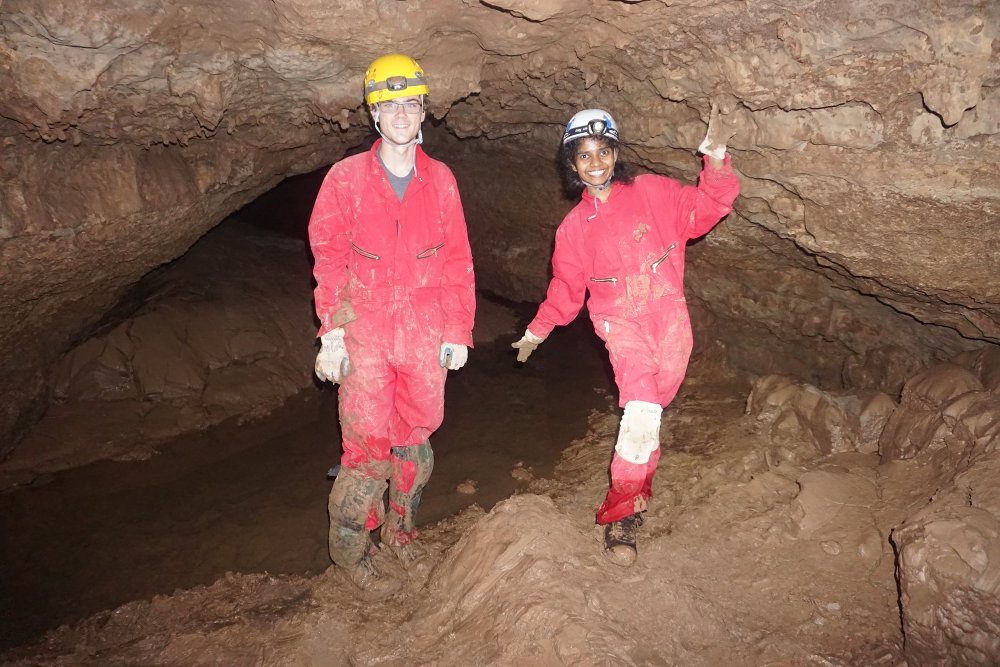Trip Report:Fort Stanton Cave trail work, 14 Oct 2017
NMT Caving Club
Trip leaders: David Hunter & Henry Schneiker
Attending: Knutt, Eshani, Tyler, Brad, Connor, and Jeannie
This trip was one of the currently rare non-beginners trips. While Fort Stanton Cave used to be open to the general public, it is now closed and difficult to access. Permits are restricted to approved exploration and conservation related proposals. While beginners are encouraged to participate in such work, trip leaders also must insure that proper WNS decontamination procedures are followed and that the sensitive areas in the cave protected. To insure that the stringent requirements are met it is necessary to insure that all cavers take the requirements seriously and are experienced with the WNS procedures. So, sadly, Fort Stanton Cave can no longer be used as a beginners cave; new cavers are now introduced to caving in less sensitive caves. Once they have demonstrated competence in the basics they can then enter more sensitive caves. This trip the NMT Caving Club was helping the BLM with trail improvements, both repairing erosion at the entry sink and installing reflectors along the trail inside the cave.
The entry to Fort Stanton Cave is a sinkhole. There is a fence surrounding the sinkhole to keep spelunkers out, and a trail for those that have permits to enter. See the prior 2017 Fort Stanton cave trip for a map of the formerly open to the public section of the cave.
Sometime ago Brad put in a lot of effort to help the NMT Caving Club on a cave dig. This mostly involved the difficult task of working in confined spaces while digging yourself into even more confined spaces. So Brad was happy to come work on something larger.
Once again, Eshani earns the Happy Caver award. It is no contest, really.
Knutt Peterson, BLM Cave Specialist, using old ways to motivate trail workers.
Over time rainstorms wash rocks and mud down into the entry sink and cover the trail. Every so often they need cleared off and the trail repaired.
Once the entry trail was repaired we proceeded down the main passage. Shown here is the main gate which helps keep out the spelunkers that climb over the fence around the entry sink.
The larger group was not the optimal configuration for placing signs and reflectors; you don't really need several people watching while one places a sign or reflector. So the group split up. The NMT portion headed through Crystal Crawl to mark the trail to Hell Hole and Lake Room. The others headed down the main passage to install reflectors and repair the trail to Roaring Hill
A caver cleaning the mud out of his shoe tread only to find that it refills with mud in a few steps.
The trip down to Lake Room includes climbing up and down several slippery mud slopes. Handlines are often used for safety and everybody must be careful not to slip. Experienced cavers shrug off these slopes as ordinary while less experienced cavers find them rather exciting.
After marking the trail out to Lake Room we returned to the main passage to rejoining the group and finish up with the trail to Roaring Hill. This segment of the Main Passage sometimes floods, and is normally Very Muddy.
Traversing this passage is sometimes fun, often wet, and always very slippery.
Long ago, during a high water period in the cave, an attempt was made to build a boat inside the cave. The boat promptly sank. A few peaces of it are seen here. And, as they are old enough to be considered historic, cavers must take care to avoid disturbing them.
After rejoining the group we found that Knutt very enthusiastically marked this portion of the trail to insure that cavers actually follow the correct path when climbing this slippery mud slope.
At the end of the main passage is sewer pipe, named for its resemblance to an old European sewer. Thankfully that doesn't include the smell as the cave mud is actually a nice clean mud closer to clay than anything else (though it apparently can't be fired into pots). Eshani dove right in. And, unsurprisingly, the mud didn't phase Eshani's happiness.
Last Updated: Dec 2017; Original Posting.
© David C. Hunter, 2017
nmtcaver {at) dragonsdawn (dot] org


